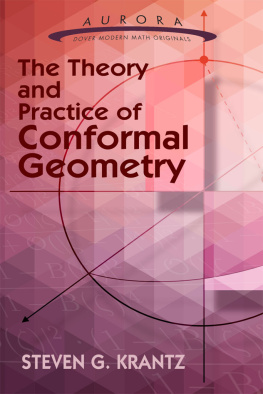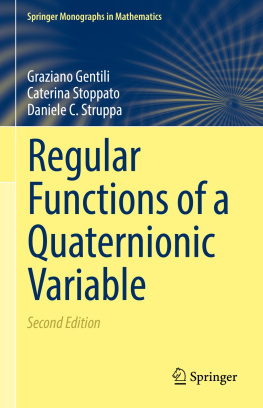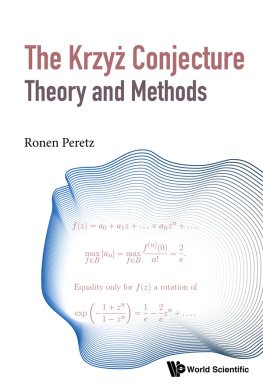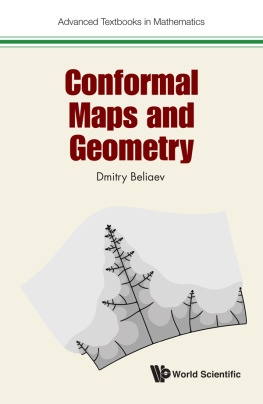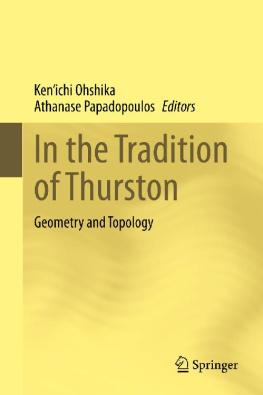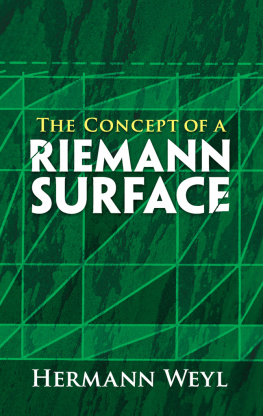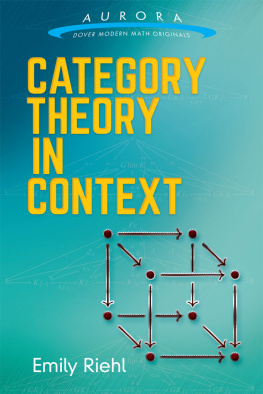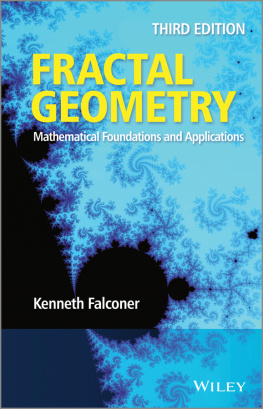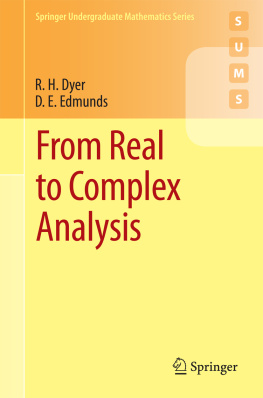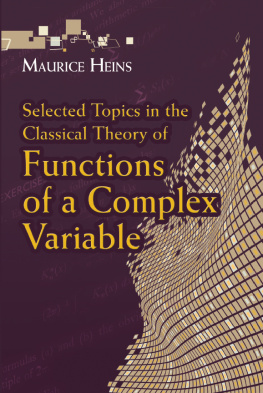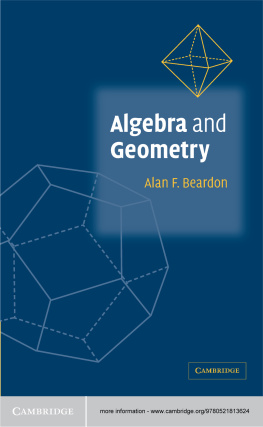AURORA
DOVER MODERN MATH ORIGINALS
Dover Publications is pleased to announce the publication of the first volumes in our new Aurora Series of original books in mathematics. In this series we plan to make available exciting new and original works in the same kind of well-produced and affordable editions for which Dover has always been known.
Aurora titles currently in the process of publication are:
Optimization in Function Spaces by Amol Sasane. (978-0-486-78945-3)
The Theory and Practice of Conformal Geometry by Steven G. Krantz. (978-0-486-79344-3)
Numbers: Histories, Mysteries, Theories by Albrecht Beutelspacher. (978-0-486-80348-7)
Elementary Point-Set Topology: A Transition to Advanced Mathematics by Andr L. Yandl and Adam Bowers. (978-0-486-80349-4)
Additional volumes will be announced periodically.
The Dover Aurora Advisory Board:
John B. Little
College of the Holy Cross
Worcester, Massachusetts
Ami Radunskaya
Pomona College
Claremont, California
Daniel S. Silver
University of South Alabama
Mobile, Alabama
The Theory and Practice of
Conformal Geometry
STEVEN G. KRANTZ
Washington University in St. Louis
DOVER PUBLICATIONS, INC., Mineola, New York
Copyright
Copyright 2016 by Steven G. Krantz
All rights reserved.
Bibliographical Note
The Theory and Practice of Conformal Geometry is a new work, first published by Dover Publications, Inc., in 2016.
International Standard Book Number
eISBN-13: 978-0-486-81032-4
Manufactured in the United States by RR Donnelley
79344301 2016
www.doverpublications.com
In homage to Lars Ahlfors.
Preface
The idea of conformal geometry goes back at least to the Riemann Mapping theorem (RMT), which was first conceived by Bernhard Riemann in his doctoral thesis in 1851. It is well known that Riemanns original proof of this seminal result was flawed. A fully rigorous proof did not appear until at least fifty years later. Nonetheless, many mathematicians refer to the RMT as the greatest theorem of the nineteenth century.
The standard proof of the RMT learned by most students today makes decisive use of the idea of normal family. Certainly Montels theorem about normal families is one of the cornerstones of modern function theory.
The interaction of conformal mappings with normal families is of interest to us. Normal families have certain natural invariance properties under conformal mappings, and the two sets of ideas work symbiotically to produce beautiful mathematical theories. In particular, the theory of automorphism groups of domains (and, more generally, of automorphism groups of Riemann surfaces) is generally built on normal families arguments.
A unifying idea in this discussion must be invariant metrics. Of course the granddaddy of all invariant metrics is the Poincar metric on the disc. But today we have the Bergman metric, the Kobayashi/Royden metric, the Carathodory metric, and many others. These are decisive tools for understanding both normal families and conformal mappings. We intend to develop this theme in the present book.
A second overarching theme is the Schwarz lemma. It is hard to beat the Schwarz lemma for an uncanny combination of simplicity and profound influence. Thanks to the work of Lars Ahlfors in 1939, we now realize that the Schwarz lemma makes a deep statement about Riemannian geometry. So it fits very naturally with the story told in the present book.
More than sixty years ago Zeev Nehari wrote an elegant book on conformal mapping. That book will serve as a foundation for our treatments. Classical topics such as the Schwarzian derivative, the Schwarz-Christoffel mapping, and Schwarz reflection are nicely treated by Nehari. But there are a host of new developments since that time, and we plan to build on the foundation that Nehari laid.
This author has been studying these ideas for forty years, and has helped to develop some of the modern theory. He takes the reader with a basic foundation in complex variable theory to the forefront of some of the modern developments in the subject. Along the way, the reader will be exposed to some beautiful function theory and also to some of the rudiments of geometry and analysis that make this subject so vibrant and lively.
We introduce in this text a few didactic tools to make the reading stimulating and engaging for students:
(1) Each chapter begins with a Prologue, introducing students to the key ideas which will unfold in the text that follows.
(2) Each section begins with a Capsule, giving a quick preview of that unit of material.
(3) Each key theorem or proposition is preceded by a Prelude, putting the result in context and providing motivation.
(4) At key junctures, we include an Exercise for the Reader:, to encourage the neophyte to pick up a pencil, do some calculations, and get involved with the material.
We hope that these devices will break up the usual dry exposition of a research monograph and make this text more like an invitation to the subject.
It is a pleasure to thank my editors Don Albers and John Grafton for their constant encouragement and guidance in this project.
St. Louis, Missouri | Steven G. Krantz |
The Theory and Practice of
Conformal Geometry
Chapter 1
The Riemann Mapping Theorem
Prologue: There is hardly a more profound theorem from nineteenth century complex analysis than the Riemann Mapping theorem. Even to conceive of such a theorem is virtually miraculous. Although Riemanns original proof was flawed, it pointed in the right direction. Certainly a great deal of modern complex function theory has been inspired by the Riemann Mapping theorem (RMT).
Throughout this book, we shall use the term domain to mean a connected, open set. While the Riemann Mapping theorem gives us a complex-analytic classification of simply connected planar domains, a theory (in fact several theories) has developed for multiply connected domains. This includes the Ahlfors map, the canonical representation, and the uniformization theorem. We treat all of these in the present chapter. Although we do not treat the topic here, Riemann surface theory is an outgrowth of the study of conformal mappings.
Perhaps the most important modern concept in this circle of ideas is Teichmller theory, which creates a moduli space for Riemann surfaces. It is beyond the scope of the present book, but it provides a pointer for further reading.
1.0 Introduction
Capsule: It is natural to think of the Riemann Mapping theorem in the context of simply connected domains. However, from the point of view of analysis, it is more convenient to have a different formulation of the topological condition. In this section we introduce the notion of holomorphic simple connectivity: A domain U is holomorphically simply connected if any holomorphic function on U has a holomorphic antiderivative.
It is easy to verify that any topologically simply connected domain is holomorphically simply connected. So we certainly suffer no loss of generality to use this substitute idea. It also streamlines our treatment.
In thinking about the topology of the plane, it is natural to ask which planar open sets are homeomorphic to the open unit disc. The startling answer is that the Riemann Mapping theorem tells us that any connected, simply connected open set (except the plane) is not only homeomorphic to the disc but conformally equivalent to the disc. One can verify separately, by hand, that the entire plane is also homeomorphic to the disc (but certainly not conformally equivalent).
Next page
